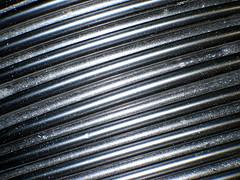 Let's look at some types of electrode which is used in ground facilities: The electrode in Lhasa natural lands. – Rod: with a cross, to angles. – Rehilete: two copper plates and welded cross. – Plate: You must have an area of at least 2000cm square and a thickness of approx. 6.4mm to 1.52mm in ferrous and nonferrous materials. – Star: In this type of electrode gives a value of less resistance. – Grid: arming a link is formed of bare copper conductors.
Let's look at some types of electrode which is used in ground facilities: The electrode in Lhasa natural lands. – Rod: with a cross, to angles. – Rehilete: two copper plates and welded cross. – Plate: You must have an area of at least 2000cm square and a thickness of approx. 6.4mm to 1.52mm in ferrous and nonferrous materials. – Star: In this type of electrode gives a value of less resistance. – Grid: arming a link is formed of bare copper conductors.
– Rings resembles a spiral of bare copper wire. – Plate star: it has the advantage of helping to dissipate energy through their tips. – Electrode rod of iron or steel: the rods must be at least 16mm in diameter. – Metal tube electrode: the pipe must be buried at least 3 meters and it is essential that the metal-covered to protect it from corrosion. – Aluminum Electrode: currently not allowed – electrode embedded in concrete: such electrodoa A foundation must be buried – horizontal electrode: the most common form is the straight line, but excavation is very expensive – deep electrode: This type is mainly for very rocky terrain and deep drilling is performed to the wet layer land because moisture increases the conductivity. – Chemical electrode: it consists in adding some chemical to the electrode to increase its conductivity. traditional or conventional natural lands in l diversity of systems currently exist, adding that the grounding is the same and what changes is the system and its functionality, quality and efficiency, as not all systems offer protection that you really are durable or have a perfect performance, the grounding systems traditional or conventional considerable drawbacks in functionality, some are not durable and most face they can not control variables such as humidity, weather, time of year and its temperature and field, etc.
